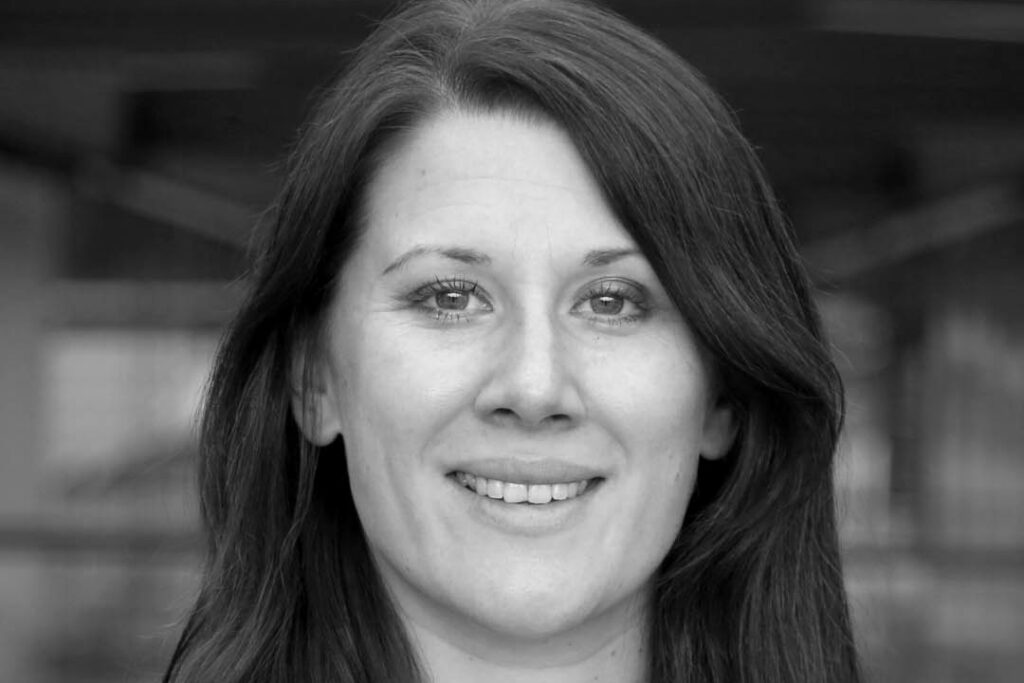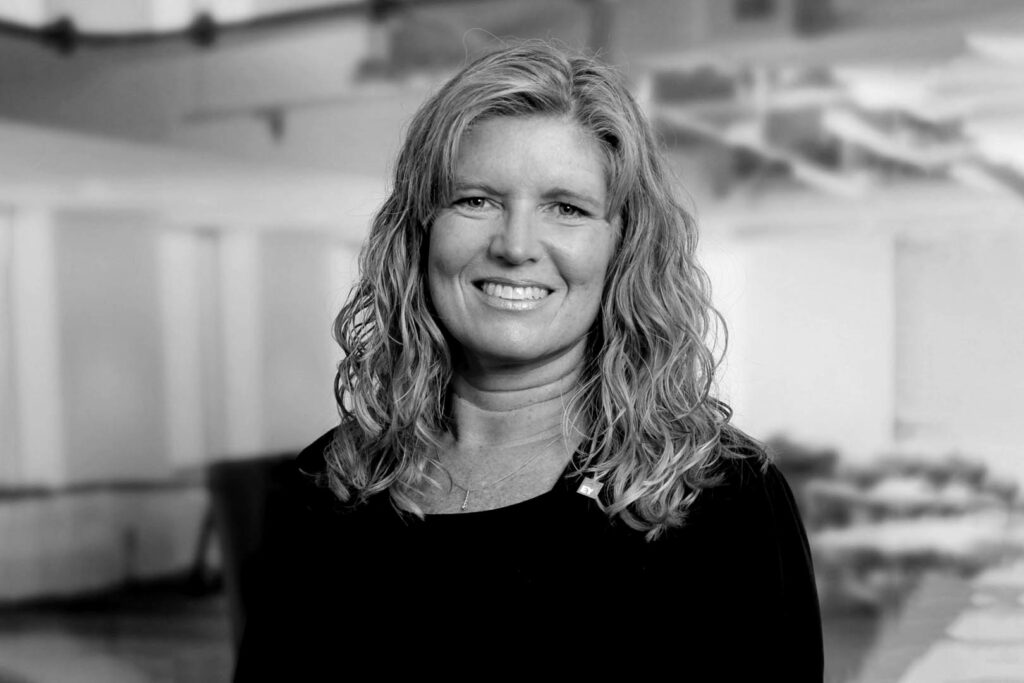
How EY’s Health & Human Services team is using data to improve the lives of vulnerable people.
Andrea Danes shakes her head at the thought of it. EY’s Global Human Services Leader found out recently that people in desperate need of health services in the US to help them through the pandemic were being asked to fill in paper forms and fax them to the right department. “I mean, a fax machine! Are you kidding me! Who uses a fax machine!”
And then, often, when all the paperwork had been filled in, another department would ask for completely different information in another format. No wonder care systems around the world are renowned for being ridiculously labyrinthine, the sheer effort of trying to navigate them often too much for those who need care the most.
“It’s strange. The care programmes exist and the money to pay for them exists; it’s not a matter of getting more funding,” says Danes. “It’s that we are not coordinated and intuitive in understanding what an individual or family needs. It’s a matter of being smarter with the funding we have to deliver what already exists in a seamless way.”
Which is where EY’s Health and Human Services team, led globally by Danes, comes in. It works with any state, government or public sector agency in children’s services, public health, Medicaid and much more to encourage better use of data and technology, with the intention of personalising and targeting support. The results have already been staggering; a simple algorithm used in Maidstone, England meant that early intervention took the rate of realisation of homelessness from 40% to 0.4%.
What’s often apparent, says Danes, is pushback at the idea of using tech and data to improve the lives of vulnerable people. The common argument is that such people need more interaction with services provided by humans, not impersonal Human Services with tech at their heart. EY’s offer, however, is not to replace caseworkers and consultants, but to use its systems to increase the efficiency and targeting of their work, thereby resulting in better outcomes for all.
“So, for example, we could combine data from multiple programmes that a state might provide for a child, rather than have them all working independently,” says Danes. “Then we’d use that data to first understand what’s happening with that child but ultimately change the action that’s being taken from a social services or human services perspective. What you want to do is improve the situation for a child in advance rather than wait for the crisis before acting.”

A version of this idea is already in use in New South Wales (NSW), Australia, which had an acute problem with children’s services. They were dealing, horrifyingly, with 350,000 cases a year. NSW wanted to shift from an approach which simply placed children in care, to one that focused on long-term outcomes, understanding the children’s needs and providing the best mix of services. “That meant creating a Citizen Intelligence Platform with reporting from education, health and police,” says Mark Nixon, an EY Client Service Partner for the NSW Department of Family and Community Services. “One of the great issues is that multiple agencies will have information on a single child, but they don’t share that with each other. What we could do with data was create a picture of each child’s circumstances and needs – to achieve better life outcomes for them.”
Even though EY employs some of the top platform experts, it’s not just a question of throwing impersonal tech and data at these problems. The Human Services department has deliberately resourced its expertise from former state leaders and government professionals – Nixon is a former NSW police officer and Danes has spent 30 years in healthcare, working with both data and policy. She also grew up in a single parent family, lived in government subsidised housing and had to turn to food assistance – she knows intimately why there is a pressing need for their services.
“The stereotype of people receiving support is so damaging,” she says. “These people are not necessarily just sitting around waiting for someone to pick them up. When I’m talking about designing systems and entry points and using data, it’s really about understanding that if we can help these families receive the assistance they’re entitled to, most of them don’t want to stay on it. They just need a bridge to get to where they’re headed. But the systems in place to do that are invariably 30 to 40 years old. We don’t do anything else the way we did it in the 1980s, so why should care work in this way?”
"We don’t do anything else the way we did it in the 1980s, so why should care work in this way?”
For Danes, there’s a key reason why EY’s work is so important. The basic things that all of us need to exist and thrive – and most of us completely take for granted – revolve around sound mental health, good access to physical health care, stable housing, access to good and consistent food, and feeling safe. When people hit what Danes calls “a point of struggle”, access to these basics begins to go missing, and government agencies might step in. But by using technology and data, access to these services can be much simpler, put into the hands of the individuals themselves, and therefore, argues Danes, much more likely to end in better outcomes – because the intervention has come at a much earlier stage.
“For example, I have a foster daughter who has access to some benefits and services, but to do so she has to go to a physical office, bring paper copies of files, fill in paper forms, make phone calls and sit on hold for ages. Then she will get a cheque – and who uses cheques these days? So we actually find many foster youth walk away from benefits because we haven’t made them accessible.
“We all know – because we all use online banking and forms and various other digital formats – that the tech is there. But it’s shifting the thinking of government from the idea of simply administering a programme, to engaging with their population. And when you engage with the population and you understand what they’re looking for, how they think and how they access the other services that they receive in their life, you start shifting how you administer the programme for the better.”
Danes cites the example of a housing programme in the United States. It will give vulnerable people a roof over the head and a front door key, but it won’t address the reason why they have recurring homelessness, whether that be down to a physical condition that isn’t being treated properly, a mental health issue or a substance use disorder issue.
LINKING THE DATA
“But if we start to link the data, and we understand more what’s going on around a human being, we can actually address the root cause,” says Danes. “We can start to ask individuals and their families what they need, how we can help them. And when you start to have a conversation with the individuals that you’re serving, you understand their aspiration and you can plug in the programmes that will help them achieve that.”
Admittedly, data sharing is a hard sell both for those administering programmes and those participating in them. But the benefits are certainly outweighing any negative connotations. Helen Sunderland, a UK partner in EY’s Human Services business, cites the problems many care homes in her country had during the first phases of the pandemic. It was an object lesson in how data sharing and analytics would have picked up problems at an early phase, but now COVID-19 has accelerated a more positive attitude surrounding data use.

Danes agrees that the pandemic is allowing EY to offer tech and data services that would ordinarily have taken years to roll out across the public sector. She calls it a “moment in time opportunity” – not to capitalise on a period of instability but to understand what people need when they are vulnerable.
“I think that vulnerability has people saying: ‘Can we do this better? Can I find the help I need? Can I get it easier?’ And we have a lot of people who need help that haven’t necessarily interacted with government programmes before.
“But the novel idea is to actually ask the people you are trying to help whether they would like us to integrate the view of their data. That way we can offer them additional services or fine-tune the services that are available. That’s a good conversation that we’re getting more traction with.”
Which is, ultimately, the conversation everyone has with every bank, insurance company or service they interact with. Whether you like it or not, you share data to make life easier. It’s just that, as Danes puts it, when you roll data and technology over into the context of government it feels like a brand-new idea.
“Technology, both from a data and hardware perspective, is the only game in town to improve change and drive more resilient, people-based services,” agrees Sunderland. “The work we did with the London Borough of Barking and Dagenham to create a master data management, analytics and predictive modeling platform brought together so many disconnected datasets on households, stored in multiple case management systems. What we were able to do is get much more effective interactions and engagements at an earlier stage, preventing the escalation of need.”
It’s an area that Danes is really excited about; pulling together data to build a better picture of someone’s needs, but then using it, with existing research, to apply risk algorithms that identify when someone is moving towards a serious incident. “If you actively use integrated data with those algorithms, you can reroute services to be more proactive and preventative,” she says.
It’s called predictive analytics, and it’s what brought that homelessness rate in Maidstone down to 0.4%. “That’s real people who have stayed off the streets because someone was alerted to the fact that they were trending towards homelessness and were able to pick up the phone and ask if there was a problem,” says Danes. “Predictive analytics doesn’t replace caseworkers and it doesn’t take away human judgement, but it augments both with an understanding of what’s happening earlier. And it’s huge.”

So with EY’s Human Services leaders working around the globe to drive that kind of change, the systems are finally catching up with the incredible work of the people in the programmes who wake up every day trying to make a difference. Danes is proud – and humbled – that the data and tech they use and develop is becoming a gamechanger in the public sector.
“We owe it to that workforce to get this right,” she says. “We also owe it to the taxpayers who expect an efficient use of public money. But most of all, we owe it to the individuals and families we’re serving. With the data we’re deploying with a lot of our clients, we now have a more comprehensive understanding of what a whole community needs.”



